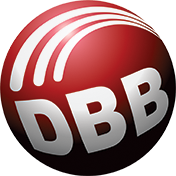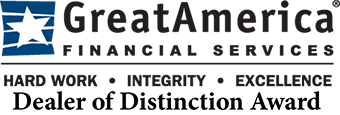Whether you are working remotely for your employer or are self-employed and running your business out of a home office, you will want to have the right tools to avoid productivity slumps and other roadblocks that can impair performance and hinder success. Of all the equipment from which to choose the two most important are your computer and printer. This article will help you weed through the many printer choices to find the right printer for your specific home office needs.
The Importance of Choosing the Right Print Technology
Choosing the right print technology for a remote work or home office application is essential. You want a device that can stand up to day-to-day usage and allow you to collaborate with office-bound colleagues or far-flung clients without skipping a beat. The problem is, there are so many printers from which to choose that you can easily get bogged down in decision overload. That’s why we have put together some basic steps to help you through the decision-making process:
Step One: Choose Inkjet or Laser
Both types of printers, laser and inkjet, come with pluses and minuses. For color printing, modern inkjet printers are fast and provide brilliant color. However, if you print a lot of monochrome documents a laser printer might be a better choice. Laser printers provide crisp text and decent print speed with page yields that can offer between 3,000 and 20,000 pages before replacement toner is needed. However, color laser printers are often more costly per page than their inkjet counterparts, so if color is needed, you may be best served by an inkjet model.
Step Two: Consider a Multifunction Device
Do you also need access to a copier, scanner, or fax machine in your home office? If so, a multifunction printer (MFP), or “all-in-one”, might be the ticket. Having the functionality of three or four devices in one small footprint is a giant advantage when you are working in space-strapped home office.
Step Three: Explore Photo Printers
If your business prints a lot of photos or graphics, you may wish to explore the many dedicated photo printers out there. These specialty printers don’t have as much flexibility as their more common cousins, but they can rival the print quality you receive via a mail order service. There are two types to consider: small format that can print up to 4 inch by 6 inch photos and wide format models that can handle pictures up to two feet in width.
Step Four: Consider Connectivity
Most printers are cloud and Wi-Fi compatible these days, but you may need other options, particularly if you plan on collaborating with colleagues or business partners. A USB-A port will allow you to connect to other devices such as external hard drives to print files. An Ethernet port is essential if you wish to hardwire your device to the internet. Near Field Communication can make connecting to smartphones and tablets simpler by touching the device to your printer and SD card slots can help transfer files, particularly photographs, easily from camera to printer.
Step Five: The Bells and Whistles
Don’t forget to check the features of each printer model to compare before you buy. Look at the cost of ink, the printer’s ability to duplex scan or print to save money on paper and ink, and any special paper handling features. Being able to print on legal paper, glossy media, or even envelopes can be important, depending on the type of business you do. And, if you do a lot of printing, you’ll want an input tray that can reduce the number of times you have to refill it.
Doing Better Business Has the Right Print Technology for Your Home Office Application
It doesn’t matter whether you are running your own small business or working from home for a larger enterprise, you need the right tools in order to remain productive — and profitable. Choosing the right print technology is the first step toward amplifying your productivity and controlling costs.
At Doing Better Business, we have curated the best printers from industry leaders such as HP, Ricoh, and Sharp to give our clients access to state-of-the-art print technology that can help their businesses thrive.
Need help choosing the right printer for your office — and your budget? Contact a representative from Doing Better Business and let our print and imaging experts help.

